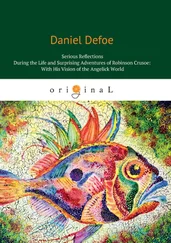Tan, Chade-Meng - Search Inside Yourself - The Unexpected Path to Achieving Success, Happiness (and World Peace)
Здесь есть возможность читать онлайн «Tan, Chade-Meng - Search Inside Yourself - The Unexpected Path to Achieving Success, Happiness (and World Peace)» — ознакомительный отрывок электронной книги совершенно бесплатно, а после прочтения отрывка купить полную версию. В некоторых случаях можно слушать аудио, скачать через торрент в формате fb2 и присутствует краткое содержание. Год выпуска: 2012, Издательство: Harper Collins, Inc., Жанр: Старинная литература, на английском языке. Описание произведения, (предисловие) а так же отзывы посетителей доступны на портале библиотеки ЛибКат.
- Название:Search Inside Yourself: The Unexpected Path to Achieving Success, Happiness (and World Peace)
- Автор:
- Издательство:Harper Collins, Inc.
- Жанр:
- Год:2012
- ISBN:нет данных
- Рейтинг книги:4 / 5. Голосов: 1
-
Избранное:Добавить в избранное
- Отзывы:
-
Ваша оценка:
- 80
- 1
- 2
- 3
- 4
- 5
Search Inside Yourself: The Unexpected Path to Achieving Success, Happiness (and World Peace): краткое содержание, описание и аннотация
Предлагаем к чтению аннотацию, описание, краткое содержание или предисловие (зависит от того, что написал сам автор книги «Search Inside Yourself: The Unexpected Path to Achieving Success, Happiness (and World Peace)»). Если вы не нашли необходимую информацию о книге — напишите в комментариях, мы постараемся отыскать её.
Search Inside Yourself: The Unexpected Path to Achieving Success, Happiness (and World Peace) — читать онлайн ознакомительный отрывок
Ниже представлен текст книги, разбитый по страницам. Система сохранения места последней прочитанной страницы, позволяет с удобством читать онлайн бесплатно книгу «Search Inside Yourself: The Unexpected Path to Achieving Success, Happiness (and World Peace)», без необходимости каждый раз заново искать на чём Вы остановились. Поставьте закладку, и сможете в любой момент перейти на страницу, на которой закончили чтение.
Интервал:
Закладка:
14. J. A. Brefczynski-Lewis, et al., “Neural Correlates of Attentional Expertise in Long-Term Meditation Practitioners,” Proceedings of the National Academy of Sciences of the United States of America 104, no. 27 (2007): 11483–11488.
15. Matthew Lieberman, et al., “Putting Feelings into Words: Affect Labeling Disrupts Amygdala Activity in Response to Affective Stimuli,” Psychological Science 18, no. 5 (2007): 421–428.
16. J. D. Creswell, et al., “Neural Correlates of Dispositional Mindfulness during Affect Labeling,” Psychosomatic Medicine 69, no. 6 (2007): 560–565.
17. Laura Delizonna and Ted Anstedt, “Enhancing Emotional Intelligence” (unpublished manuscript, 2011). Also relevant is the famous James-Lange theory (by William James and Carl Lange) suggesting that changes in bodily responses are a necessary condition for emotional experience to arise.
18. Malcolm Gladwell, Blink: The Power of Thinking Without Thinking (New York: Little, Brown and Company, 2005).
19. Daniel Goleman, “Social Intelligence: The New Science of Human Relationships” (lecture, Authors@Google, Mountain View, CA, August 3, 2007), http://siybook.com/v/gtalk_dgoleman.
Chapter Two:
Breathing as if Your Life Depends on It
1. Brefczynski-Lewis, “Neural Correlates of Attentional Expertise.”
2. Actually, magic is at Platform 9¾ at King’s Cross station, but I wasn’t supposed to tell.
3. William James, The Principles of Psychology , vol. 1 (New York: MacMillan, 1890).
4. HH the Dalai Lama, The Universe in a Single Atom: The Convergence of Science and Spirituality (New York: Three Rivers Press, 2006).
5. Richard Davidson, et al., “Alterations in Brain and Immune Function Produced by Mindfulness Meditation,” Psychosomatic Medicine 65, no. 4 (2003): 564–570.
6. Heleen Slagter, et al., “Mental Training Affects Distribution of Limited Brain Resources,” PloS Biology 5, no. 6 (2007): e138.
7. Antoine Lutz, et al., “Long-Term Meditators Self-Induce High-Amplitude Gamma Synchrony during Mental Practice,” Proceedings of the National Academy of Sciences of the United States of America 101, no. 46 (2004): 16369–16373.
8. Jon Kabat-Zinn, et al., “Influence of a Mindfulness Meditation-Based Stress Reduction Intervention on Rates of Skin Clearing in Patients with Moderate to Severe Psoriasis Undergoing Phototherapy (UVB) and Photochemotherapy (PUVA),” Psychosomatic Medicine 60, no. 5 (1998): 625–632.
9. Sara Lazar, et al., “Meditation Experience Is Associated with Increased Cortical Thickness,” Neuroreport 16, no. 17 (2005): 1893–1897.
Chapter Three:
Mindfulness Without Butt on Cushion
1. James, The Principles of Psychology .
2. Thich Nhat Hanh, The Miracle of Mindfulness .
3. Norman Fischer, Taking Our Places: The Buddhist Path to Truly Growing Up (San Francisco: HarperOne, 2004).
4. Thich Nhat Hanh, Living Buddha, Living Christ (New York: Riverhead, 1997).
5. Personal communication.
Chapter Four:
All-Natural, Organic Self-Confidence
1. Goleman, Working with Emotional Intelligence .
2. Goleman, Working with Emotional Intelligence . See “Emotional Competence Framework” for the definition of self-awareness .
3. Cary Cherniss and Daniel Goleman, The Emotionally Intelligent Workplace: How to Select for, Measure, and Improve Emotional Intelligence in Individuals, Groups, and Organizations (Hoboken, NJ: Jossey-Bass, 2001).
4. Cherniss and Goleman, The Emotionally Intelligent Workplace .
5. Fischer, Taking Our Places .
6. Richard Boyatzis, The Competent Manager: A Model for Effective Performance (New York: Wiley, 1982).
7. Alexander Stajkovic and Fred Luthans, “Self-Efficacy and Work-Related Performance: A Meta-Analysis,” Psychological Bulletin 124, no. 2 (1998): 240–261.
8. Daniel Goleman, Emotional Intelligence: Why It Can Matter More Than IQ (New York: Bantam, 1995).
9. Kabat-Zinn, Wherever You Go, There You Are .
10. S. P. Spera, E. D. Buhrfeind, and J. W. Pennebaker, “Expressive Writing and Coping with Job Loss,” Academy of Management Journal 37, no. 3 (1994): 722–733.
11. “Know Thyself,” Very Short List (March 2, 2009), http://siybook.com/a/knowthyself.
Chapter Five:
Riding Your Emotions like a Horse
1. “Lekha Sutta,” the Discourse on Inscriptions, Anguttara Nikaya .
2. Xinxin Ming , Inscriptions on Trust in Mind. Also known as the Shinjinmei in Japanese.
3. Jon Kabat-Zinn, Full Catastrophe Living: Using the Wisdom of Your Body and Mind to Face Stress, Pain, and Illness (New York: Delacorte Press, 1990).
4. Philippe Goldin, “The Neuroscience of Emotions” (lecture, Google Tech Talks, Mountain View, CA, September 16, 2008), http://siybook.com/v/gtalk_pgoldin.
5. Kevin Ochsner and James Gross, “The Cognitive Control of Emotion,” Trends in Cognitive Sciences 9, no. 5 (2005): 242–249.
6. Yongey Mingyur Rinpoche, The Joy of Living: Unlocking the Secret and Science of Happiness (New York: Harmony, 2007).
Chapter Six:
Making Profits, Rowing Across Oceans, and Changing the World
1. Tony Hsieh, Delivering Happiness: A Path to Profits, Passion, and Purpose (New York: Business Plus, 2010).
2. John Geirland, “Go with the Flow,” Wired 4, no. 9 (1996).
3. Daniel Pink, Drive: The Surprising Truth About What Motivates Us (New York: Riverhead, 2009).
4. Daniel Pink, “The Surprising Science of Motivation” (lecture, TEDGlobal, July 2009), http://siybook.com/v/ted_dpink.
5. According to BusinessWeek’s 2009 Customer Service Champs report—ranked by reader surveys and J. D. Power research—Zappos was ranked seventh while Four Seasons was ranked twelfth.
6. Marc Lesser, Less: Accomplishing More by Doing Less (Novato, CA: New World Library, 2009).
7. Michael Jordan on the Nike commercial, “Failure.”
8. Brent Schlender, “Gates without Microsoft,” Fortune Magazine (June 20, 2008).
9. Seligman, Learned Optimism .
10. Barbara Fredrickson, Positivity: Groundbreaking Research Reveals How to Embrace the Hidden Strength of Positive Emotions, Overcome Negativity, and Thrive (New York: Crown, 2009).
11. “Great Waves,” 101zenstories.com .
Chapter Seven:
Empathy and the Monkey Business of Brain Tangos
1. G. Rizzolatti and M. Fabbri-Destro, “Mirror Neurons: From Discovery to Autism,” Experimental Brain Research 200, no. 3–4 (2010): 223–237.
2. A very nice, readable quick guide by Christian Keysers on mirror neurons is available in Current Biology 19, no. 21(2009): R971–R973. Also available on the web at: http://siybook.com/a/keysers.
3. An excellent survey on these and other scientific studies relating to empathy is: Tania Singer, “Understanding Others: Brain Mechanisms of Theory of Mind and Empathy” in Neuroeconomics: Decision Making and the Brain , eds. P. W. Glimcher, et al. (Maryland Heights, MO: Academic Press, 2008): 251–268.
4. There is a collection of studies each addressing a different aspect of the relationship between emotional awareness, empathy, and the insula. [Craig 2004] and [Herbert 2007] suggest significant links between strong emotional awareness and awareness of inner-body feelings via activity in the insula, including perception of heartbeats, while [Singer 2008] describes many studies that link the insula to empathy. [Lutz 2008] suggests all these abilities are trainable with meditation. [Craig 2004]: A. D. Craig, “Human Feelings: Why Are Some More Aware Than Others?” Trends in Cognitive Sciences 8, no. 6 (2004): 239–41. [Herbert 2007]: B. M. Herbert, O. Pollatos, and R. Schandry, “Interoceptive Sensitivity and Emotion Processing: An EEG Study,” International Journal of Psychophysiology 65, no. 3 (2007): 214–227. [Lutz 2008]: A. Lutz, “Regulation of the Neural Circuitry of Emotion by Compassion Meditation: Effects of Meditative Expertise,” PLoS One 3, no. 3 (2008): e1897. [Singer 2008]: Singer, “Understanding Others.”
Читать дальшеИнтервал:
Закладка:
Похожие книги на «Search Inside Yourself: The Unexpected Path to Achieving Success, Happiness (and World Peace)»
Представляем Вашему вниманию похожие книги на «Search Inside Yourself: The Unexpected Path to Achieving Success, Happiness (and World Peace)» списком для выбора. Мы отобрали схожую по названию и смыслу литературу в надежде предоставить читателям больше вариантов отыскать новые, интересные, ещё непрочитанные произведения.
Обсуждение, отзывы о книге «Search Inside Yourself: The Unexpected Path to Achieving Success, Happiness (and World Peace)» и просто собственные мнения читателей. Оставьте ваши комментарии, напишите, что Вы думаете о произведении, его смысле или главных героях. Укажите что конкретно понравилось, а что нет, и почему Вы так считаете.







![Chade-Meng Tan - Search Inside Yourself - Increase Productivity, Creativity and Happiness [ePub edition]](/books/703803/chade-thumb.webp)



